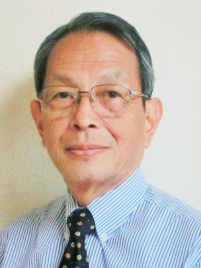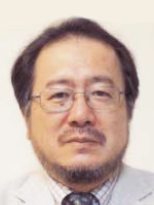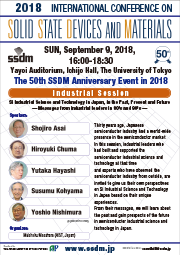The 50th SSDM Anniversary Event in 2018
Industrial Session
Si Industrial Science and Technology in Japan, in the Past, Present and Future
- Messages from industrial leaders in 80’s and 90’s -
Sunday, September 9, 2018, 16:00-18:30
(Yayoi Auditorium, Ichijo Hall)
Access
- Organizer:
- Meishoku Masahara (AIST, Japan)
- Speakers:
-
Shojiro Asai
Hiroyuki Chuma
Yutaka Hayashi
Susumu Kohyama
Yoshio Nishimura
(Alphabetical order) -
(1) Messages from Experts who have analyzed the semiconductor industry from outside
Yoshio Nishimura
Hiroyuki Chuma
-
(2) Message from Researcher at National Institute
Yutaka Hayashi
-
(3) Messages from Industrial Leaders
Shojiro Asai
Susumu Kohyama
- ✓How was the Si industrial science and technology developed at that time?
- ✓How did they make use of the major international academic societies and conferences related to Si technology (such as IEDM, VLSI, SSDM, DRC, etc.)?
- ✓What roles did these societies play in the industrial R&D?
- ✓Is the semiconductor industrial science and technology being developed in Japan now?
- ✓Should we continue to R&D the semiconductor industrial science and technology in Japan?
- ✓If yes, how should we do and what can we do now?
- ✓How can the academic society contribute to the industrial R&D in Japan?
- ✓How should be the collaborative research with universities and/or national institutes?
SSDM 2018 has a special “Industrial Session” on September 9 as the 50th Anniversary Event. The sub-title of this session is “Si Industrial Science and Technology in Japan, Past, Present and Future - Messages from industrial leaders in 80’s and 90’s - ”.
Five distinguished speakers will present own perspectives on Si Industrial Science and Technology in Japan based on their unique experiences.
The participation fee for this session is free for one who has registered in advance (including the on-site) for the main conference. Immediately after this session, Welcome Reception will be held in the same place.
Please attend the session and enjoy the discussion!
please pay JPY1,000 On-site.
For those registering for the conference, there are no additional fees.
Program
Abstract
Thirty years ago, Japanese semiconductor industry had a world-wide presence in the semiconductor market. In this session, industrial leaders who had built and supported the semiconductor industrial science and technology at that time and experts who have observed the semiconductor industry from outside, are invited to give us their own views on the following points. From their messages, we will learn about the past and gain prospects of the future in semiconductor industrial science and technology in Japan.
About Speakers
Shojiro Asai
 Shojiro Asai received his BS, MS, and PhD degrees in Applied Physics from the University of Tokyo in 1963, 1965, and 1969. He joined Hitachi Ltd in 1968 and worked in its research laboratories on semiconductor devices and technologies. He did extensive physical modeling and numerical simulations in the development of sub-micron MOS devices to characterize its small-dimension effects, hot-carrier-induced degradation, alpha-particle-induced soft errors, and helped make Hitachi’s semiconductor technology competitive world-wide. Dr. Asai led the development of dynamic random access memories with 3-D memory cells, and microcontrollers with embedded nonvolatile memories and digital signal processor capabilities. He was instrumental in the development of electron beam mask making and direct writing systems as well. From 2007 till 2015, he was Research Supervisor of a 9-year research program entitled, “VLSI Design and Test for Systems Dependability” under the CREST Initiative funded by JST (Japan Science and Technology Agency)-funded, where 11 project teams worked in industry-academia collaborations. An IEEE Life Fellow and JSPS Fellow, Dr. Asai is currently Executive Advisor at Rigaku Corporation and Auditing & Supervisory Board Member (External) at JVC Kenwood Corporation.
Shojiro Asai received his BS, MS, and PhD degrees in Applied Physics from the University of Tokyo in 1963, 1965, and 1969. He joined Hitachi Ltd in 1968 and worked in its research laboratories on semiconductor devices and technologies. He did extensive physical modeling and numerical simulations in the development of sub-micron MOS devices to characterize its small-dimension effects, hot-carrier-induced degradation, alpha-particle-induced soft errors, and helped make Hitachi’s semiconductor technology competitive world-wide. Dr. Asai led the development of dynamic random access memories with 3-D memory cells, and microcontrollers with embedded nonvolatile memories and digital signal processor capabilities. He was instrumental in the development of electron beam mask making and direct writing systems as well. From 2007 till 2015, he was Research Supervisor of a 9-year research program entitled, “VLSI Design and Test for Systems Dependability” under the CREST Initiative funded by JST (Japan Science and Technology Agency)-funded, where 11 project teams worked in industry-academia collaborations. An IEEE Life Fellow and JSPS Fellow, Dr. Asai is currently Executive Advisor at Rigaku Corporation and Auditing & Supervisory Board Member (External) at JVC Kenwood Corporation.
Hiroyuki Chuma
 Hiroyuki Chuma received the B.S. and Ph.D. degrees in Economics from the Faculty of Economics, Hitotsubashi University and the Department of Economics, State University of New York at Buffalo, in 1975 and 1984, respectively. From 1975 to 1978, he had worked for the private company (Taisei Corporation) in Japan. His academic career has started at the Department of Economics, Southern Illinois University at Carbondale, USA, as an assistant professor (tenure track, 1984-1985). After that, he was an associated or full professor, Faculty of Economics, Tokyo Metropolitan University (associate: 1985-1991), Hitotsubashi University (associate: 1992-1993, full: 1994-1998), and the Institute of Innovation Research, Hitotsubashi University (full: 1999-2013). Currently, he has been a professor, Faculty of Social Innovation, Seijo University, Tokyo, since 2014.
Hiroyuki Chuma received the B.S. and Ph.D. degrees in Economics from the Faculty of Economics, Hitotsubashi University and the Department of Economics, State University of New York at Buffalo, in 1975 and 1984, respectively. From 1975 to 1978, he had worked for the private company (Taisei Corporation) in Japan. His academic career has started at the Department of Economics, Southern Illinois University at Carbondale, USA, as an assistant professor (tenure track, 1984-1985). After that, he was an associated or full professor, Faculty of Economics, Tokyo Metropolitan University (associate: 1985-1991), Hitotsubashi University (associate: 1992-1993, full: 1994-1998), and the Institute of Innovation Research, Hitotsubashi University (full: 1999-2013). Currently, he has been a professor, Faculty of Social Innovation, Seijo University, Tokyo, since 2014.
During these years, he was also a Visiting Professor, Department of Economics, Yale University (2000-2001), an Affiliate Director of Research, 1st Theory-Oriented Research Group, National Institute of Science and Technology Policy (2004-2007), a Panel Member, Expert Panel on Basic Policy, Council for Science, Technology and Innovation (CSTI), Cabinet Office (2009-2012), and a Faculty Fellow, Research Institute of Economy, Trade and Industry (RIETI), Ministry of Economy, Trade and Industry (2000-2010, 2015-2017).
Dr. Chuma has been specialized in semiconductor-industry field research (especially, chip design/fabrication, design/equipment tools, and materials) for about 20 years after doing the extensive field research on the automotive and machine tool industries. He is a member of the Japanese Economic Association, the Japan Academy of Business Administration, and the Japan Society of Applied Physics.
Yutaka Hayashi
 Dr. Yutaka Hayashi spent 28 years from 1964 to 1992 in Electrotechnical Laboratory (Government Lab.) for R&D of IC, LSI and photovoltaic technology, since graduation from The University of Tokyo, Japan in 1964. During that time, he stayed at Stanford University in 1971- 72 and joined in the medical electronics group (under Prof. J. D. Meindl) as a visiting researcher.
Dr. Yutaka Hayashi spent 28 years from 1964 to 1992 in Electrotechnical Laboratory (Government Lab.) for R&D of IC, LSI and photovoltaic technology, since graduation from The University of Tokyo, Japan in 1964. During that time, he stayed at Stanford University in 1971- 72 and joined in the medical electronics group (under Prof. J. D. Meindl) as a visiting researcher.
According to the policy of the reduction of the number of the government employees, he moved to Sony Corp. in 1992 as a Research Fellow then as a Vice President for R&D of Semiconductor Co., Sony Corp.. From 1999 to 2001, he joined Halo LSI Design and Device Technology, Inc. U.S.A. as a Technology Director.
He has been a part time lecturer of Univ. of Tsukuba for photovoltaic technology for 18 years from 1990 to 2009, then from 2009 to 2014 served, as an advisor, the Tsukuba Nano-Tech Research and University/Industry/National-Research-Institute Collaboration Based Human Resource Development Program (Honors program).
At the same time, in 2004, he was invited as a research fellow by Nanotechnology Research Institute (NRI), National Institute of AIST and worked there to 2015. From 2010 to 2017 he was a part time invited research scientist for The Institute of Scientific and Industrial Research, Osaka University. From 2012 up to now, He has worked for Toyota Technological Institute as an invited research fellow.
He served SSDM as a member of the program committee up to 1990, then the program chairman (1991-1992) and a member of the organizing committee (1991-1997) of SSDM and served also VLSI Symposium as the program co-chairman and chairman (1990-1991) and the symposium co-chairman and chairman (1996-1997) of VLSI Technology and a member of the executive committee (1983-2009) of VLSI Symposia.
He served, as one of Japanese Representatives, the Versailles Summit Follow-up International Meeting “Photovoltaic Project” from 1982 to 1992. He served NEDO as members of NEDO’s committees on photovoltaic technologies from 1987 to 1992 and as a chairman of NEDO’s crystalline Si solar cell committee and served Sun-Sine Project Head Quarter of AIST, MITI as an advisor (for promotion) from 1987 to 1994.
Recently, He served JST (Japan Science and Technology) as a research advisor in CREST from 2009 to 2017.
Dr. Y. Hayashi is a member of JSAP, IEICEJ, IEEE and EAJ (The Engineering Academy of Japan).
Susumu Kohyama
 Dr. Kohyama joined Toshiba R&D Center in 1969 for research of Semiconductor Surface Physics, then Research and Development of MOS Devices. Started from development of CMOS memories then processors, he moved to Semiconductor Division to drive Logic and System LSI’s, and related design infrastructure. He has over 30 years of experience in the semiconductor industry. From 1973 through 1974 he stayed Minneapolis, Minnesota for joint development of CCD memories with Honeywell. From 2003 to 2004, he served as Chief Technology Officer of the Electronics Devices Group of Toshiba Corporation. From 2001 to 2003, he was Executive Vice President of Toshiba Semiconductor Company. From 2004 through 2010, he was President and CEO of Toshiba Ceramics Corporation, then Covalent Materials Corporation after MBO.
Dr. Kohyama joined Toshiba R&D Center in 1969 for research of Semiconductor Surface Physics, then Research and Development of MOS Devices. Started from development of CMOS memories then processors, he moved to Semiconductor Division to drive Logic and System LSI’s, and related design infrastructure. He has over 30 years of experience in the semiconductor industry. From 1973 through 1974 he stayed Minneapolis, Minnesota for joint development of CCD memories with Honeywell. From 2003 to 2004, he served as Chief Technology Officer of the Electronics Devices Group of Toshiba Corporation. From 2001 to 2003, he was Executive Vice President of Toshiba Semiconductor Company. From 2004 through 2010, he was President and CEO of Toshiba Ceramics Corporation, then Covalent Materials Corporation after MBO.
He graduated from University of Tokyo, Department of Applied Physics, then received Master and Doctor Degrees. Currently, he is President and CEO of K Associates, Inc. to serve for Semiconductor and Electronics Industries, relating to IoT, AI and Agriculture.
He served as the Co-chair of the VLSI Symposia from 2006 through 2009. At the first Symposium in 1981, he gave an invited talk titled “CMOS Technologies for VLSI Circuits”, and he has served on the Technology Program Committee from 1982 through 1984, Working Group from 1987 through 1989 and Circuits Symposium Chair from 1992 through 1993. Since 1991 for nineteen years, he has served on the Executive Committee.
Yoshio Nishimura
 Yoshio NISHIMURA received the B.E., M.E. and Ph.D. degrees in electronics engineering, from Tokyo Institute of Technology, in 1965, 1967, and 1971, respectively. From 1967 to 1968, he studied at the Center of the Solid-State Electronics of the University of Montpellier, France. In 1971, he joined Nikkei-McGraw-Hill, Inc. (presently Nikkei Business Publications, Inc.), where he experienced from 1979 to 1990 the editor-in-chief of the Nikkei Electronics Magazine. From 2002 to 2003, he was with The University of Tokyo as a professor of The School of Engineering. From 2004 to 2009, he was an auditor of Tokyo Institute of Technology. From 2005 to 2012, he also served as a visiting professor of the School of Political Science of Waseda University. Currently he works as a freelance journalist in the field of technology and industry.
Yoshio NISHIMURA received the B.E., M.E. and Ph.D. degrees in electronics engineering, from Tokyo Institute of Technology, in 1965, 1967, and 1971, respectively. From 1967 to 1968, he studied at the Center of the Solid-State Electronics of the University of Montpellier, France. In 1971, he joined Nikkei-McGraw-Hill, Inc. (presently Nikkei Business Publications, Inc.), where he experienced from 1979 to 1990 the editor-in-chief of the Nikkei Electronics Magazine. From 2002 to 2003, he was with The University of Tokyo as a professor of The School of Engineering. From 2004 to 2009, he was an auditor of Tokyo Institute of Technology. From 2005 to 2012, he also served as a visiting professor of the School of Political Science of Waseda University. Currently he works as a freelance journalist in the field of technology and industry.
He is the author and co-author of several tenths of books including University-Industry Collaboration and The Decline of the Japanese Electronics Industry.


